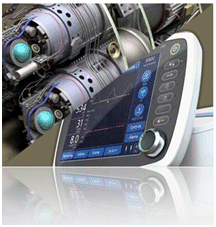When designers and engineers think about design associativity, they often think about history-based 3D modeling systems. CAD software that deploys a history-based approach to modeling requires engineers to anticipate and define feature constraints, relations and dependencies, which ensures that any design change will update all related downstream geometry. That’s design associativity.
Though they require a lot more work, thought and pre-planning on the part of the user, history-based modeling systems provide users with a methodical, orderly and powerfully automated way to create models. The problems arise, however, when changes have to be made, a rather common occurrence at all stages of development. Even small design changes cause a domino effect so users must carefully consider the impact a change will have to associated parts.

Is there associativity in direct modeling?
During The Pros and Cons of 3D Modeling Paradigms webinar, one of the questions asked of our panel of experts was what is the role or definition of associativity in direct modeling? Our panelists each brought a unique perspective to that question, which I thought was worthy of sharing.
Dan Staples, vice president of Solid Edge Product Development, Siemens PLM Software
To me the word associativity with parametrics is the notion that changing one thing changes other things that are associative. Things can be related to one another and things can be dimensionally driven and, therefore, association between the dimension and the faces. The key difference is that it doesn’t cause a linear regeneration of the treetop to bottom. That expensive piece is you edit the first feature and you pay for all subsequent thousand features.
That’s not true in a direct modeling system. However, there is the notion of associativity, meaning that things can happen. Dimensions are edited and faces moved, or Face A is associated with Face B and, therefore, it should move also. That’s associativity by my definition, and it’s perfectly valid in a direct modeling system.
Chad Jackson, principal analyst, Lifecycle Insights
There is probably a finer point here, which is there’s design associativity and there’s deliverable associativity. You might want to have design intent because of intent ripple has a change ripple across multiple parts in the same assembly. You might want to have that. Obviously when you change a part, you want the drawing to update and you want a service assembly animation to update. I think in both of those cases, neither are really limited by direct modeling. I think they are separable.
Brian Thompson, vice president, Creo Product Management, PTC
Maybe another way to look at is when you’re building in a history-based parametric modeling system, every selection that you make of some other geometry to create a dimension or to lay it on the line in a sketch or whatever it may be, it does create a dis-associativity that you as an engineer you have to consider: is that an important thing? Is that aspect important to my design intent? If it is, that can be a very powerful thing and they’re inherent in the design process.
Whereas with direct modeling, I would say that kind of thing is very much put in right at the top of mind of the engineer as they’re working through the direct modeling process. They will put that in into the design as they see fit. It’s something that the design engineer consciously decides; I want to create dis-associativity. It just doesn’t happen as a natural part of the design process, whereas in history-based systems, it very much is ingrained. Selections that you make do in fact create associative references unless you specifically say no I don’t want that. It’s usually the opposite assumption in direct modeling.
If you missed “The Pros and Cons of 3D Modeling Paradigms” webinar, you can still see it here.


Leave a Reply
You must be logged in to post a comment.